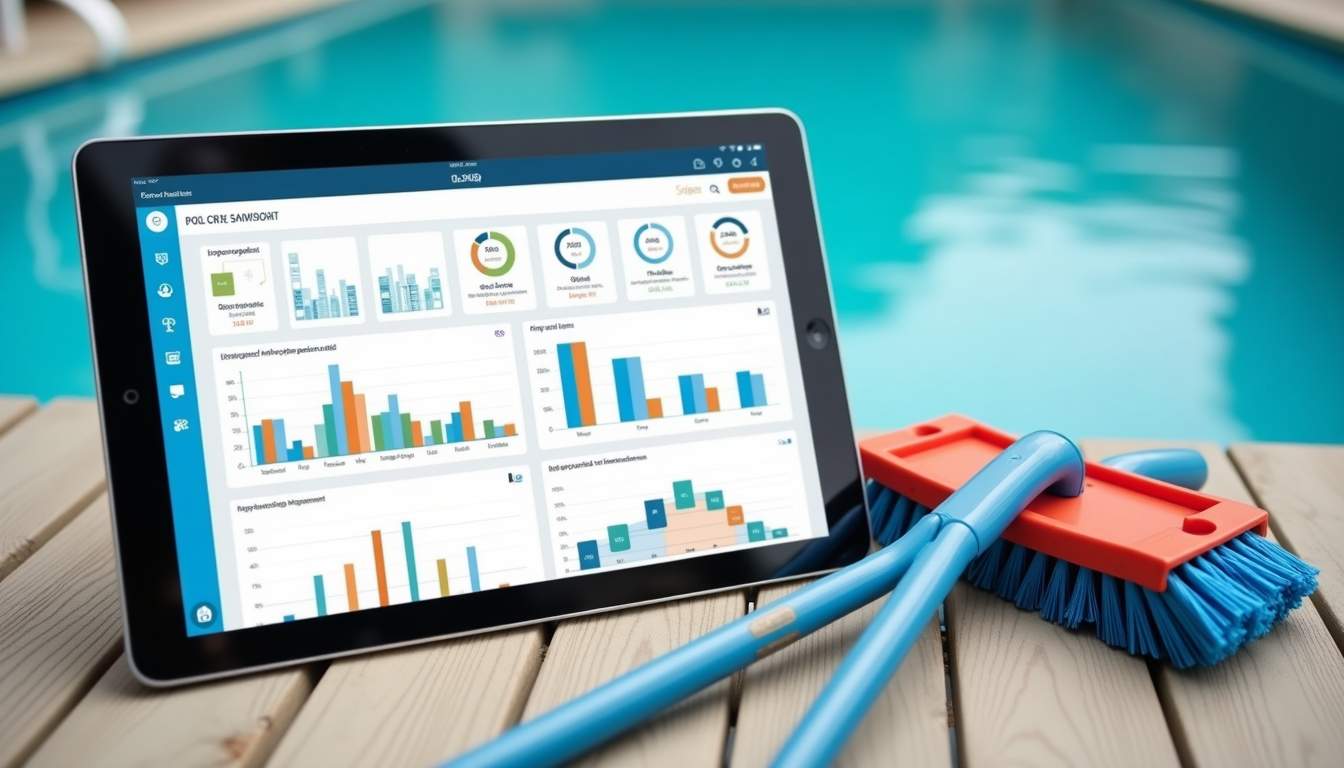How to Identify Hidden Revenue Opportunities in Your Data
In today’s data-driven world, the ability to extract actionable insights from data is paramount for businesses seeking to enhance their profitability. Companies across various industries are inundated with vast amounts of data, but many struggle to uncover the hidden revenue opportunities that lie within. This article will explore effective strategies and methodologies for identifying these opportunities, ultimately enabling businesses to make informed decisions that drive growth.
Understanding Your Data Landscape
Before diving into the specifics of identifying revenue opportunities, it is crucial to have a clear understanding of the data landscape within your organization. This involves assessing the types of data you collect, how it is stored, and the tools you use for analysis.
Types of Data
Your organization likely collects various types of data, including transactional data, customer feedback, market research, and operational metrics. Each type of data serves a different purpose and can reveal unique insights. For instance, transactional data can highlight purchasing patterns, while customer feedback can indicate areas for improvement in products or services.
To effectively identify hidden revenue opportunities, it is essential to categorize and analyze these different data types. This categorization allows for a more structured approach to data analysis, making it easier to pinpoint trends and anomalies that may indicate potential revenue streams. Additionally, integrating qualitative data, such as customer testimonials and social media sentiment, can provide a more holistic view of customer behavior and preferences, enriching your understanding of the market landscape.
Data Storage and Management
How data is stored and managed can significantly impact the ability to analyze it effectively. Utilizing a centralized data management system can streamline the process of accessing and analyzing data. Cloud-based solutions, for example, allow for real-time data access and collaboration among team members.
Furthermore, ensuring data quality is paramount. Inaccurate or incomplete data can lead to misguided insights, ultimately hindering revenue growth. Regular audits and cleansing of data can help maintain its integrity, ensuring that the insights derived from it are reliable. Employing data governance practices, such as defining data ownership and establishing data stewardship roles, can also enhance accountability and ensure that data is consistently managed across the organization. This not only improves the quality of the data but also fosters a culture of data-driven decision-making, where insights are valued and utilized effectively across departments.
Leveraging Advanced Analytics
Once a solid understanding of the data landscape is established, the next step is to leverage advanced analytics techniques. These techniques can help uncover patterns and correlations that may not be immediately apparent through traditional analysis.

Predictive Analytics
Predictive analytics involves using historical data to forecast future outcomes. By employing statistical algorithms and machine learning techniques, businesses can identify trends that may indicate potential revenue opportunities. For example, analyzing past sales data can help predict future demand for specific products or services, allowing companies to optimize inventory and marketing strategies accordingly.
Additionally, predictive analytics can assist in customer segmentation, enabling businesses to tailor their offerings to specific groups. This targeted approach can enhance customer satisfaction and loyalty, ultimately driving revenue growth.
Data Visualization
Data visualization tools transform complex data sets into intuitive visual formats, making it easier to identify trends and anomalies. By utilizing graphs, charts, and dashboards, businesses can quickly assess performance metrics and spot potential revenue opportunities.
Effective data visualization not only aids in identifying trends but also facilitates communication among team members. When insights are presented visually, it becomes easier for stakeholders to understand and act upon the findings, fostering a data-driven culture within the organization.
Identifying Customer Behavior Patterns
Understanding customer behavior is crucial for identifying hidden revenue opportunities. By analyzing customer interactions and preferences, businesses can tailor their offerings to meet the evolving needs of their clientele.
Customer Journey Mapping
Mapping the customer journey involves analyzing the various touchpoints a customer encounters from awareness to purchase. By identifying pain points and areas of friction in the journey, businesses can make targeted improvements that enhance the overall customer experience.
For instance, if data reveals that customers frequently abandon their carts at a specific stage, it may indicate a need for better communication or incentives. Addressing these issues can lead to increased conversion rates and, subsequently, higher revenue.
Personalization Strategies
Personalization is a powerful tool for driving revenue growth. By leveraging data insights, businesses can create tailored experiences for their customers. This could involve personalized marketing campaigns, product recommendations, or customized pricing strategies.
For example, e-commerce platforms often utilize browsing history and purchase behavior to recommend products that align with individual customer preferences. This level of personalization not only enhances customer satisfaction but also encourages repeat purchases, ultimately boosting revenue.
Exploring New Market Segments
Hidden revenue opportunities may also exist in untapped market segments. By analyzing data related to demographics, purchasing behavior, and market trends, businesses can identify new customer segments that may be interested in their products or services.

Market Research and Analysis
Conducting thorough market research is essential for identifying potential new segments. This involves analyzing industry trends, competitor strategies, and customer demographics. By gathering and analyzing this data, businesses can uncover niches that may be underserved or overlooked.
For instance, if data reveals a growing interest in eco-friendly products within a specific demographic, businesses can pivot their marketing strategies to target this audience. By aligning offerings with emerging trends, companies can tap into new revenue streams.
Testing and Validation
Once new market segments have been identified, it is crucial to test and validate these opportunities before fully committing resources. A/B testing and pilot programs can provide valuable insights into the viability of targeting a new segment.
For example, launching a limited-time marketing campaign aimed at a new demographic can help gauge interest and response. Analyzing the results of such tests can inform future strategies and investments, ensuring that resources are allocated effectively to maximize revenue potential.
Optimizing Pricing Strategies
Pricing is a critical factor in driving revenue, and data analysis can provide valuable insights into optimizing pricing strategies. Understanding how pricing impacts customer behavior can lead to more effective pricing models that enhance profitability.

Dynamic Pricing Models
Dynamic pricing involves adjusting prices based on various factors, such as demand, competition, and customer behavior. By analyzing data related to these factors, businesses can implement dynamic pricing strategies that maximize revenue opportunities.
For instance, airlines and ride-sharing services often utilize dynamic pricing to adjust fares based on real-time demand. By leveraging data analytics, businesses can ensure that pricing aligns with market conditions, ultimately driving higher revenues.
Customer Feedback and Price Sensitivity
Understanding customer feedback regarding pricing can also provide insights into price sensitivity. Analyzing customer responses to pricing changes can help businesses identify the optimal price points for their products or services.
Surveys, focus groups, and social media monitoring can all provide valuable data on customer perceptions of pricing. By incorporating this feedback into pricing strategies, businesses can enhance their competitiveness and revenue potential.
Enhancing Operational Efficiency
Operational efficiency plays a significant role in maximizing revenue opportunities. By analyzing operational data, businesses can identify areas for improvement that can lead to cost savings and increased profitability.
Process Optimization
Data analysis can reveal inefficiencies in operational processes that may be hindering revenue growth. By conducting a thorough review of workflows, businesses can identify bottlenecks and areas for streamlining.
For example, if data indicates that a particular process consistently leads to delays, it may be worth exploring automation or restructuring to enhance efficiency. Improving operational processes not only reduces costs but also enhances the customer experience, leading to increased revenue.
Resource Allocation
Analyzing data related to resource allocation can also uncover hidden revenue opportunities. By understanding how resources are utilized across various departments and projects, businesses can make informed decisions about where to allocate resources for maximum impact.
For instance, if data reveals that a particular marketing channel consistently generates high returns, it may be beneficial to allocate more resources toward that channel. Conversely, identifying underperforming areas can help businesses reallocate resources to more promising opportunities.
Continuous Monitoring and Adaptation
Identifying hidden revenue opportunities is not a one-time endeavor; it requires continuous monitoring and adaptation. The business landscape is constantly evolving, and staying attuned to changes in data is essential for sustained growth.
Establishing Key Performance Indicators (KPIs)
Establishing clear KPIs allows businesses to measure performance and track progress toward revenue goals. By regularly reviewing these metrics, organizations can identify trends and make data-driven decisions to optimize revenue opportunities.
For instance, tracking customer acquisition costs, customer lifetime value, and conversion rates can provide insights into the effectiveness of marketing strategies. Regularly assessing these KPIs enables businesses to pivot quickly in response to changing market conditions.
Fostering a Data-Driven Culture
Creating a culture that prioritizes data-driven decision-making is essential for identifying hidden revenue opportunities. Encouraging team members to leverage data in their daily operations fosters a proactive approach to uncovering insights.
Training and resources should be provided to empower employees to analyze data effectively. By fostering a culture of continuous learning and improvement, organizations can enhance their ability to identify and capitalize on revenue opportunities.
Conclusion
Identifying hidden revenue opportunities in data is a multifaceted process that requires a comprehensive understanding of the data landscape, advanced analytics techniques, and a keen awareness of customer behavior. By leveraging these strategies, businesses can uncover insights that drive growth and enhance profitability.
In a world where data is abundant, the ability to extract meaningful insights is a competitive advantage. Organizations that prioritize data analysis and foster a culture of continuous improvement will be well-positioned to capitalize on hidden revenue opportunities and achieve long-term success.








